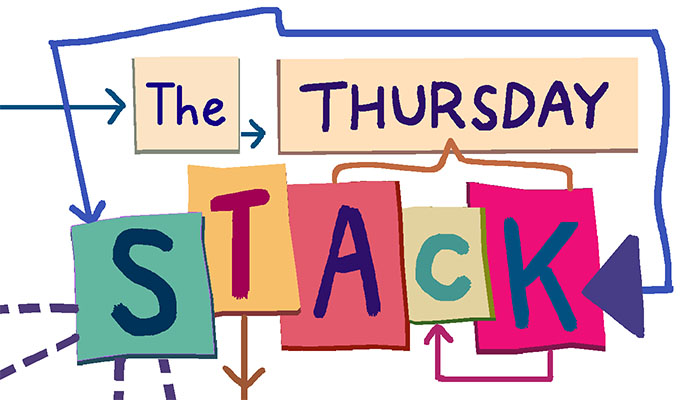“We’re not competing with our competitors, we’re competing with our past.” A searching remark by a marketer, recalled yesterday by Salesforce Marketing Cloud CSO Juan Suarez-Davis (“JSD”) at the launch of the fifth annual “State of Marketing” report. JSD and CMO Stephanie Buscemi were in town to talk about the results of the survey of over 4,000 marketing professionals. The results are surprisingly sunny, as we’ll see, but the conversation still touched on the challenges of digital transformation.
JSD quoted that remark when I asked whether the persistence of “fiefdoms” (his term) and siloes within brands was a signal that putting the customer first remained a slogan rather than a reality. And as the remark indicates, challenging an internal legacy of competing teams and worn-out processes is still a necessity many brands face; although Buscemi said that she was starting to see “customer-first organizational designs and structures.
They were in agreement that the conversation about customer-centricity crosses departmental boundaries. Said JSD, “the transformation taking place is not just within marketing.” Salesforce, of course, is seeking to provide a system of record across not only sales and marketing, but also service, community, and even the IoT.
Nevertheless, marketing is the focus of the report, and let’s accentuate the positive:
- There has been a 25 percent YOY increase in the number of data sources used by marketing organizations to understand their customers (the top five sources, in order: a marketing database; CRM; ESP; DMP; and CDP)
- There’s also been a 44 percent increase in adoption of AI since 2017
- More than 50 percent of marketers are more mindful of privacy than a year ago
- The top priority and top challenge is engaging with customers in real time.
But it’s some stats on satisfaction among marketing leaders that really jump out:
- 28 percent of those surveyed are “completely satisfied” with the cross-channel customer engagement capabilities
- High performing marketers are almost 10 times more likely than underperformers to be “completely satisfied” with their ability to create personalized cross-channel experiences
- Those paragons are also more than 7 times more likely to be “completely satisfied” with their ability to balance personalization and privacy
Okay, that’s the high performers, but anyone (everyone) who is a customer has bad stories to tell about personalization gone wrong. Interestingly Salesforce’s angle is that “only 28% of marketers are completely satisfied…” (emphasis added), where the reader’s reaction might be: that many? In conversation, JSD did wonder whether the respondents were primarily focused on the channels they own.
You can read more commentary from JSD here, or download the full report here. — Kim Davis
**********
Depending on who you asked at dailymotion’s holiday roundtable, held Tuesday in New York, ad tech firms spent either two months or two full quarters in 2018 fretting over GDPR requirements. Good cheers for 2019 innovations were tempered by Festivus-style airings of grievances. All the hopes of organizing and further monetizing Connected TV, for instance, had to be tabled for the moment. Mike Aidane, VP of Engineering Ad Tech at dailymotion’s Paris offices, observed that the two leviathans meant to be tamed by GDPR – Google and Facebook – are the same giants with all the resources to get up to speed and comply with the regulations, while innovative ad tech outfits with smaller workforces are in danger of being left behind.
Privacy, an important concern for many consumers, has been served to the ad community’s banquet as a feast of regulations. To wash down the indignation, marketers draw from the wellspring of trust. Beeswax CEO Ari Paparo described how industry players are congealing into two divergent clusters resembling a barbell. On the one side, real innovators are embracing transparency and finding ways to work together. On the other side, Amazon. Those seeking a compromise between full transparency and market capture will slip off the bar in the tenuous middle and go splat.
Because of the trust deficit, the entire digital media industry is caught in the middle. Julia Welch, VP Activation, Media & Growth Channels for MediaMath, summed up the matter without passing the buck. Audiences want engaging content that speaks to them personally without their being creeped out by intrusive data gathering. “Consumers expect customized ad experiences, and it’s our job to rise to the occasion,” she said.
Building trust with skeptical consumer audiences is a matter of branding. With the proliferation of smart home devices, consumer electronics brands are executing their own high wire act. Common household objects have the capability to acquire personal data without a user ever having to purposefully type their deepest yearnings into a Google search box. The old selling point that everybody’s devices can automatically interact with each other (and share your data) in the big smart-home cloud has been somewhat refined. The focus now is in developing home products and appliances that operate with limited uploading to the cloud, keeping important customized data points “on device.”
At last week’s AI Summit/New York, tech lifestyle expert Carley Knobloch encouraged all consumers to insist on “wearing the pants in the relationship” with their smart devices. The LG-hosted talk included a Google representative, and all participants agreed – trust is paramount. Knobloch went on to point out that established (therefore, trusted) brands like LG have an advantage against startups in this regard. It’s on the brand to portray themselves as trustworthy if they ever expect consumers to take full advantage of the conveniences associated with connecting their homes.
But how can a new brand or vendor break in, if trust is the barrier to entry? — Chris Wood







